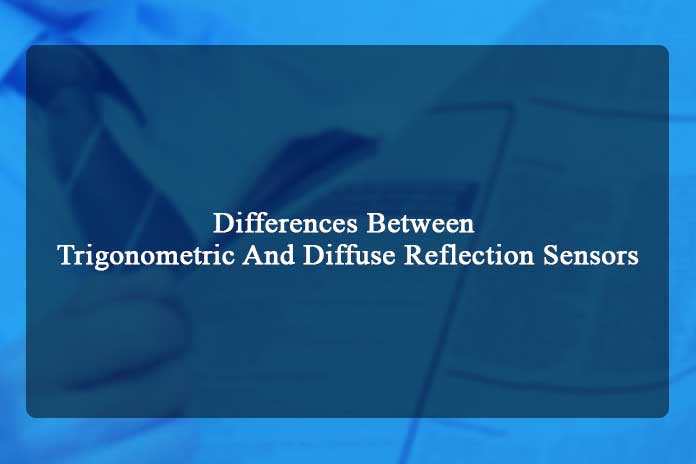Panasonic focuses on the differences between diffuse direct reflection and trigonometric sensors. The basic theory of direct reflective sensors is to decide which type is best suited for each application.
Table of Contents
Conventional Diffuse Reflection
In a conventional scattered light sensor, an operation is quite simple. A beam of light is emitted (typically red or infrared). This bounces off the present object and depending on the amount of reflected light (the one that returns to the sensor), the output is activated or not. If there is no object or the object is far away, there will not be enough light returned, and the work will not be activated. This is how most direct reflective sensors work. However, objects of different colors can create some difficulties: a white (or light) thing reflects more light than a black (or dark) one, and this implies that the light one may be detected, and probably the dark one will not.
It is also necessary to consider the impact of varying the distance. The same object will reflect more light the closer it is. An example of the implication of all this: a black box near the sensor can give the exact reflection as a much more distant white one. The sensor only evaluates the amount of light that returns, and in this case, the amount is the same. From what has been said, it is easy to understand that there can be difficulties detecting objects when the background is lighter than the object to be seen.
Trigonometric Reflection
In this case, the principle of operation is different. Also, in this case, a beam of light is emitted, but the quantity of reflected light is not considered, but “where” it is reflected. The photocells have a photodiode located behind a focusing lens and offset relative to the emitting diode. With pure trigonometry, depending on the distance from the object, the lens will concentrate the reflected beam at different points of the photodiode. Therefore, we will be able to discriminate by length instead of by quantity of light. With the following image, it will undoubtedly be more apparent.
With these sensors, there will no longer be the problem of confusing a light background with a dark object. This is why these photocells are called background suppressors. Is one type of sensor better than another? Not necessarily. This will depend on the application to be solved. Let’s take a look at a couple of examples.
Detect Objects Regardless Of Color
In this case, a diffuse detection sensor is not suitable because the adjustment we can make for a specific color may not be valid for detecting an object of another color. Here a trigonometric sensor will undoubtedly be cheaper. Same thing if the bottom is very close
Detection Of The Label Placed On An Object
In this case, if the label is white or lighter than the product to which it is attached, we should choose to discriminate with a diffuse light sensor based on the amount of reflected light since the difference in distance, which is the thickness of the label, is minimal. As you can easily see, depending on the application, one option or the other suits us better. For this reason, it is essential to know how each technology works to decide by evaluating which criteria are the most appropriate. In the following video, some tests were performed with sensors of both types to see the differences. In particular, the #NoSpace miniature photocell CX412 was chosen as the diffuse reflection sensor, while the CX442 photocell was selected as the trigonometric sensor.
Also Read: Digital Writing: How To Write On The Web


